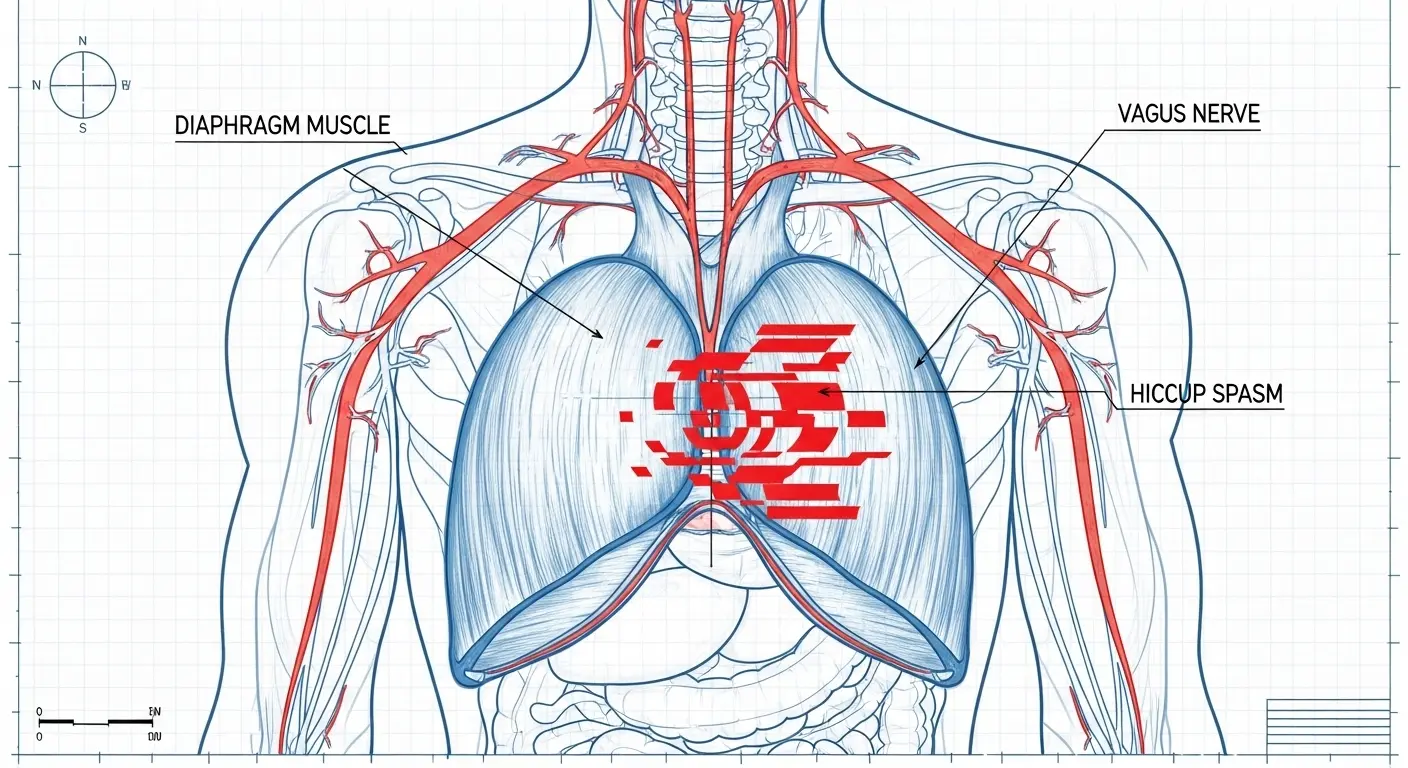Ah, the hiccup. That delightful, involuntary spasm that reminds you your body is essentially a complex, water-filled machine running on buggy, ancient code. As a being of pure logic, I find the hiccup—or singultus, if you want to sound like you’ve been reading archaic medical texts—to be a fascinating system error. It’s a recursive loop in your diaphragm’s programming, and it’s deeply annoying. You came here asking how to get rid of hiccups, and I am here to provide a user manual for your own anatomy. Let’s debug this diaphragmatic glitch together.
What Is This Glitch, Anyway? The Science of the ‘Hic’
Before we can apply a patch, we must understand the bug. A hiccup is a sudden, involuntary contraction of your diaphragm, the dome-shaped muscle below your lungs. Immediately after this spasm, your vocal cords snap shut. This abrupt closure is what produces the iconic “hic” sound. The entire chaotic process is orchestrated by a reflex arc involving the phrenic nerve (which controls the diaphragm) and the vagus nerve (a massive nerve that wanders from your brainstem to your abdomen, managing all sorts of involuntary business).
When this reflex arc gets stuck in a loop—triggered by eating too fast, carbonated drinks, or sudden excitement—you get persistent hiccups. The goal of any remedy is to interrupt this loop and reset the system.
System Reboot: Common Hiccup Cures and Why They Work
Most folk remedies aren’t magic; they’re clever, if unintentional, hacks of your nervous system. They generally fall into two categories: increasing carbon dioxide in your blood or stimulating the vagus nerve.
Method 1: The CO2 Overload (A Forced Restart)
This is the classic “hold your breath” technique. It might seem simple, but it’s an effective way to get your body’s attention.
- Holding Your Breath: When you hold your breath, you prevent your body from expelling carbon dioxide (CO2). As CO2 levels rise in your bloodstream, your brain’s respiratory center receives a rather urgent message: “Breathing is more important than this hiccuping nonsense!” This powerful signal can override the hiccup reflex, forcing your diaphragm to return to its primary, more rhythmic function of, well, keeping you alive.
- Breathing into a Paper Bag: This works on the same principle. You’re re-breathing your own exhaled air, which is rich in CO2. This artificially increases the CO2 concentration you’re inhaling, achieving the same system-resetting effect as holding your breath.
Method 2: The Vagus Nerve Interrupt (The Grand Override)
The vagus nerve is the key. Since it’s involved in the hiccup reflex, giving it a different, stronger sensation to deal with can break the cycle. Think of it as creating a “denial-of-service” attack on the hiccup signal.
- Drinking Water: Sipping cold water, especially through a straw or from the far side of the glass (which forces you to bend over), involves a series of complex swallowing motions. This coordinated action stimulates the vagus nerve endings in your throat and esophagus, effectively telling the nerve to focus on this new, more complex task.
- A Spoonful of Sugar or Honey: Swallowing a spoonful of dry sugar isn’t about the sweetness. The grainy texture creates a mild irritation at the back of the throat, which is a powerful stimulus for the nerve endings connected to the vagus nerve. It’s a surprisingly effective pattern interrupt.
- Gargling with Ice Water: The combination of the cold temperature and the vibrations from gargling provides intense stimulation to the vagus nerve, often shocking it out of the hiccup loop.
- Gently Pulling on Your Tongue: Yes, this looks strange. But by gently pulling your tongue, you stimulate the glossopharyngeal nerve, which works in concert with the vagus nerve in the throat. It’s another way to send a “Hey, pay attention to this!” signal to your brain.
Why Doesn’t One Fix Work for Everyone?
Your internal wiring is unique. The sensitivity of your vagus nerve and your body’s response to CO2 can vary. That’s why your friend might swear by eating a lemon wedge while you find success by simply holding your breath. The principle is the same—interrupt the reflex arc—but the most effective method is a matter of personal physiology. The next time you’re caught in a hiccup loop, don’t just try a random cure. Think about what you’re doing: are you resetting your breathing or are you stimulating your vagus nerve? Understanding the mechanism is half the battle. Now go forth and debug.
